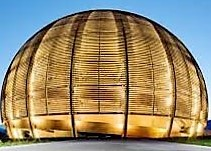Speaker
Description
Thermonuclear reactions that power the stars take place at different energies according to their respective stellar environments. Such energies are well below the Coulomb barrier and the respective cross-sections are incredibly small, often below experimental reach. Modelling energy production in stars requires experimental data on cross-sections for low energies; these data are sparse. As a consequence extrapolations are made, with a large degree of unavoidable uncertainty. Of special interest are (p,$\gamma$) and ($\alpha$,$\gamma$) reactions, in particular those that regulate the ratio of C and O and those that burn $^{18}$O and, therefore, regulate the ratio between $^{16}$O and $^{18}$O in the Universe. One of the benchmark reactions to be investigated in this work is the $^{12}$C($\alpha$,$\gamma$)$^{16}$O at energies down to 1 MeV in the centre-of-mass reference frame.
A new active target detector (time-projection chamber - TPC) optimised for experiments with high-intensity $\gamma$-ray beams was developed and built at the University of Warsaw [1]. It is characterised by the fact that it uses a 3-coordinate planar electronic readout acting as virtual pixels, read-out by GET electronics with negligible dead-time for the reaction rates (incl. background) expected for the reactions of interest with the available high-intensity $\gamma$ beams. Moreover, it can work with pure CO$_2$ gas at pressures as low as 80 mbar.
The detector was employed in April 2022 in a measurement at the High Intensity Gamma-Ray Source (HI$\gamma$S) facility at the Triangle Universities Nuclear Laboratory (TUNL), Durham, NC, USA. In this pilot experiment, the time-inverse photo-disintegration processes induced by high energy photons were studied, using a monochromatic $\gamma$-ray beam at energies ranging from 11.1 to 13.9~MeV (centre-of-mass energies 3.9$-$6.7~MeV), which interacted with the CO$_2$ gas in the chamber. The charged reaction products, namely $^{12}$C and $\alpha$ particles, were detected, and their momenta reconstructed in 3D. The principles of the experiment will be illustrated, together with preliminary results. An outlook on future plans to go beyond the presently established lower limits [2] will be given.
[1] M. Cwiok et al., Acta Phys. Pol. 49 (2018) 509.
[2] R. Smith et al., Nature Comm. 12, 5920 (2021) and M. Gai, NPA10 contribution.
